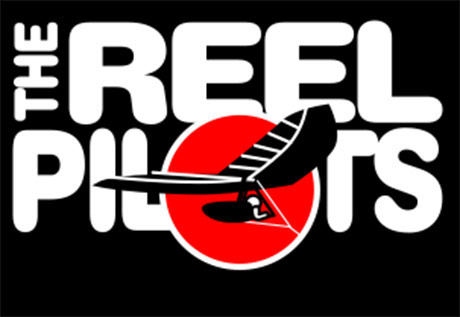

![]()
In order for an artificial gravity to accurately simulate natural gravity, it must have the same characteristics as natural gravity, namely (1) constant in direction, (2) constant in magnitude, (3) distributed the same as gravity and (4) acting only through the center-of-mass of each component.
#1: CONSTANT DIRECTION
The direction of the towing force must remain essentially constant throughout every phase of the towed flight. (Length of the tow line must be long compared to the transverse motion of the glider... the faster the glider climbs and maneuvers, the longer tow line needed... 500 feet or longer.)
#2: CONSTANT TENSION
The tension in the tow line must remain essentially constant throughout every phase of the towed flight. (Some tension regulation device must be used... +/- 15 pounds during every phase of tow. Settings should reflect a "comfortable" flight and "reasonable" climb rate.)
#3: C-M (Center of Mass)
DISTRIBUTION The towing force must be distributed between the components of the flying system proportionally to the masses of the respective components. (Pilot and glider move in relation to each other and the tow force needs to be evenly distributed. 2:1 bridle is quite effective at this – 2/3 force on the pilot, 1/3 force on the glider.)
#4: CM ATTACHMENTS
The tow line/bridle must be attached as closely to the effective center-of-mass of each of the components and must not be allowed to touch any other part of the flying system. (Violations of this produce lockouts, adverse yaw and other loss of control problems.)
![]()
Any system must be able to handle: deviations from the ideal case; pilot release; excessive tow forces; learning.
#5: GRADUAL TRANSITIONS
The transition to and from tow, as well as any variations while on tow, must be gradual in nature. (Use of a long line that has sufficient stretch – but not too much stretch or driving will be difficult. 3/16" – 1/4" hollow braided polypropylene, polyethylene or nylon are used successfully.)
#6: RELIABLE RELEASES
The release devices and their activation methods must be sturdy, rapid and reliable. (Release activation MUST be readily accessible to the pilot regardless of where his hands are or where his body has shifted. Only single-point release systems should be used.)
#7: INFALLIBLE WEAK LINK
The system must include a weak link which will infallibly and automatically release the glider from tow whenever the tow line tension exceeds the limit for safe operation. (There is always the possibility something unexpected can happen. Breaking point should be appropriate for the weight and experience of the pilot, not to exceed 1G – sum of all towed parts.)
#8: SAFE LEARNING METHOD
The system must include a method for safely learning to use it by gradually advancing from one level of experience to the next. (NEVER try 2 new things at once. NEVER allow yourself to be pushed beyond your personal comfort level. NEVER exceed the limits of your equipment and skills. NEVER go more than twice as high, fast, far, etc., as previously mastered. Learn in smooth air before transitioning to rougher air.)
![]()
Perhaps obvious, but safety should never be taken for granted.
#9: ADEQUATE POWER
The system must contain a source of power adequate to maintain a safe mode of flight while under tow.
#10: CAPABLE CREW
The system must be operated by a crew which is adequate in number and competent in ability to see that it functions properly. (Driver, spotter, launch assistant, pilot.)
#11: RELIABLE COMMUNICATIONS
The system must provide a means whereby the pilot can reliably communicate to the rest of the crew. (Anything longer that 500 feet of tow line requires a radio – minimum from pilot to driver – for pilot-in-command. Everyone must agree on what signals or commands that will be used.)
#12: SUITABLE ENVIRONMENT
The system must be operated only within the environment and under the conditions for which it was designed.
NEXT PAGES:
General overview
Parts of the system
Bridle info
Driver info
Towing criteria
Linknife Static Tow
 Physics professor Dr. Lionel Donnell Hewett, from Kingsville, Texas, developed the Skyting Bridle in the early 80's. He published a newsletter, "Skyting" (oct 81 - oct 86), as well as writing numerous articles on Tow development for the American Hang Gliding magazines.
Physics professor Dr. Lionel Donnell Hewett, from Kingsville, Texas, developed the Skyting Bridle in the early 80's. He published a newsletter, "Skyting" (oct 81 - oct 86), as well as writing numerous articles on Tow development for the American Hang Gliding magazines.
This method gained world wide acceptance. Some modifications have been made over time, eg., a 50/50 (1:1) bridle system is most often used for aerotowing instead of the 2:1 system originally devised.
During development of this Towing (Skyting) Criteria and working out the details of towing in general, his wife, Helen, or their daughter would hold onto the towline, pulling Don up and down the sand dunes along the Gulf of Mexico. By doing this, he was able to develop the 2:1 bridle through an understanding of how the tow forces are applied to both glider and pilot.
Don and Helen died in an accident on Dec 30, 2020. He was 81 years old.
DISCLAIMER: As with all aviation endeavors, your choice and use of equipment is totally up to you. It is assumed you are an experienced HG or PG tow pilot who is intimately familiar with the style of towing you will be doing. As such, YOU ASSUME ALL RISK AND LIABILITY in the use of the Linknife, as well as all other parts, functions and personnel involved in the towing and flight operations. If you do not have experience in towing, please contact an instructor for expert training. Trying to learn on your own can, and probably will, result in your injury and even death. Many pilots have paid the ultimate price so we may now tow as safely as never before possible. Please learn from their lessons.
Linknife Home | Static Line | Payout/Platform | Aerotow | Testimonials
Reel Pilots Home |
Hewett's Towing Criteria |
Driver SOP
Static Line Basics |
Static Towing Parts |
Hewett Bridle Basics
Parachutes |
Lockouts |
Payout Primer |
Flying Sites
Links clubs/info |
Links2 states/countries
Airshow |
Site Opening Primer
Birren Design Company | Site Map
©2000-2023 Peter Birren email
Powered by w3.css